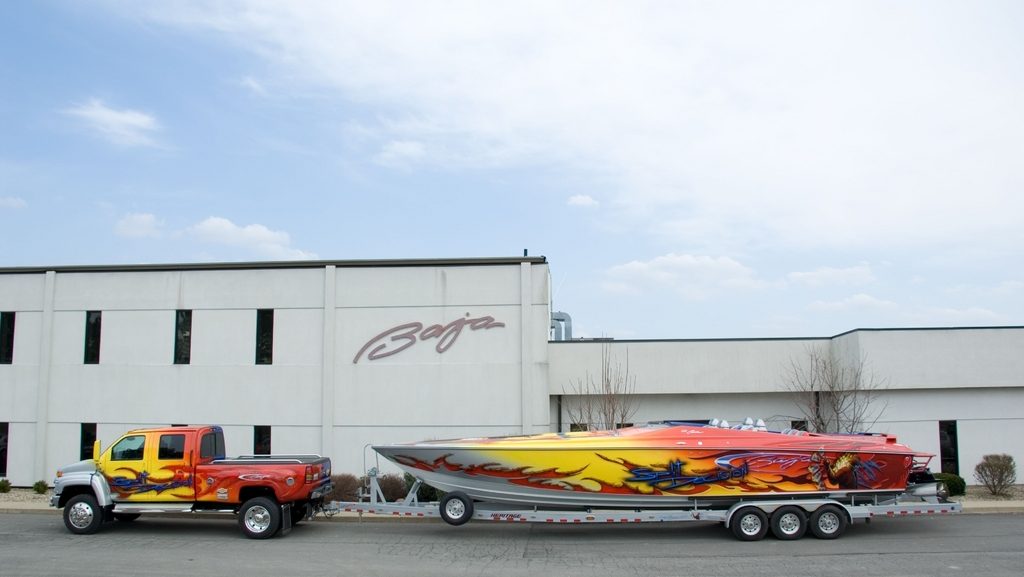We all know the story. The high-performance boat market started to sink when the economic crisis hit – especially in the U.S. where, in most cases, buyers lumped their boat loans in with their mortgages. And we all know happened next. The Miami Boat show, which is normally chock-full of high-performance crafts, saw a dramatic plunge in the number of these boats on display. At the 2012 show, several brands were off the roster altogether. Financial woes have affected our country too, but declines in sport boat sales on our side of the border have also had a lot to do with high gas prices.
Baja Marine, a Canadian icon
The Baja label set up shop in Quebec in the 1980s and enjoyed fairly impressive growth in the 90s. Part of this success was due to the fact that Baja operated a showroom where boat enthusiasts could check out new models – which is not something that other brands could boast. Thus, it’s not surprising that since then, more Baja models have been sold than all other sport brands put together. This also explains why there are so many used Baja products available for sale.
For the uninitiated, you should know that the high-performance boat segment is split down the middle. One the one side are products built by high-volume manufacturers (such as Baja, Fountain, Donzi, Formula and a few others), while the other half of the equation is made up of limited edition models from custom builders (such as Cigarette, MTI, Outerlimits, Nor-Tech and a few more) that offer even bigger, bolder and more expensive products. Baja benefitted from widespread distribution, as it used to belong to Brunswick Group, a company that still owns the Sea Ray and Bayliner labels.
Well-suited for the Canadian market
Baja models were never known to be the sportiest in the segment, nor did they enjoy the most fame. But, their array of products was well-suited to our market. The company always offered several different entry-level models under 30 feet, thereby making it possible for the common mortal to own one of their boats. These starter products also drew in new buyers who would later progress to bigger, more powerful craft.
Another factor that came into play was the way Baja models were configured. Unlike the competition, Baja didn’t put all its eggs in the performance basket. Baja also took the time to ensure interiors were spacious, user-friendly and well-designed overall. As a result, their boats were quite simply more practical. Since few competitors could offer as much cabin space as Baja, buyers stuck with the brand.
The beginning of the end
When the economic crisis reared its ugly head in 2008, Brunswick Group sold Baja to Fountain under conditions that remain nebulous to this day. At the time, Fountain claimed that it wanted to take the brand in new directions and use their expertise to enhance the performance of Baja products. The idea was for Baja to focus on smaller craft while Fountain concentrated on building larger boats.
One year later, company founder Reggie Fountain left and Fountain found itself filing for bankruptcy protection under Chapter 11 of the law. Its assets were bought by American Marine Holdings, which owns Donzi and Pro-Line. Once again, promises were made to revitalize Baja with four 2012 models under 30 feet (including two bowriders). This struck hope into the hearts of fans, but shortly thereafter we learned that the new holding company was also filing for bankruptcy as it faced several lawsuits.
In light of all this, it’s hard to be optimistic. But one thing is for sure: Baja’s glory days are gone for good. Recent models have become hard to find. Is it the end of an era for Baja, Fountain and Donzi? Probably.

